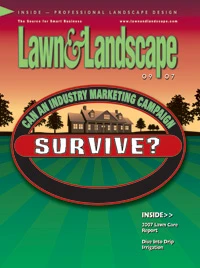Sustainability is a word you can’t ignore in today’s eco-conscious world. Everywhere we turn there’s talk of “going green.” For consumers, this may mean making simple changes like switching to energy efficient appliances or taking public transportation. For businesses, however, getting serious about sustainability means making infrastructure changes that lead to improved performance in energy efficiency, water conservation, indoor environmental quality and more.
For green industry businesses – especially those providing design and architecture services – a shift toward sustainability opens the door to an area of opportunity: green roof design and installation.
The green roof industry grew 100 percent from 2004 to 2005, says Steven Peck, founder and president of Toronto-based Green Roofs for Healthy Cities, the nonprofit organization working to promote green roofs throughout North America. As the green building movement expands (and it will – the U.S. Green Building Council just reached the 10,000 member mark in July), so will the demand for green roofs. “Green roofing is a very important piece of that big-picture puzzle,” Peck says. “That’s a trend that’s not going away.”
OPPORTUNITIES. McCrae Anderson, principal designer for McCaren Designs, a St. Paul, Minn.-based interior and exterior landscape services firm, entered the green roof business about four years ago. “I could see it was a trend that was developing just from what I was reading and with the work of the U.S. Green Building Council.” The USGBC connection, Anderson says, is one major factor driving interest in green roofs – installing a green roof can earn a building as many as 15 credits towards LEED certification.
Not surprisingly, the environmental benefits of green roofs are many, including a reduction in storm-water run-off, heat and sound insulation, energy savings, improved air quality and reduction in the urban heat island, Peck says. Added benefits are increased park space, improved aesthetics, biodiversity and the potential reduction in a building’s heating and cooling costs.
The business opportunities for landscape designers in the green roof arena are plentiful and diverse, too. The opportunities available to landscape designers are a “mixed bag,” Peck says. “Some companies do everything from design, to install to maintenance. Other companies only play a role on the design side.”
McCaren Designs is focusing its marketing efforts primarily to architects, says Anderson, who has designed or remodeled a number of green roofs. Several have been street-level projects built over parking garages; one currently under construction is a green roof for a church in Duluth, Minn. A smart company willing to invest the time and money to become educated and eventually accredited in green roof design may carve out a niche that will be hard to touch as the industry matures. “If companies are looking to get into green roofs, they need to get into it quickly before other companies get a lot of experience,” Anderson says. “Experience means a lot when doing green roofs.”
CHALLENGES. Experience and education are vital because there’s a lot of room for error, Peck says. “People tend to underestimate some of the complexities around the design and building of green roofs. It’s not the same as doing landscaping around a building – it’s an artificial environment with climate extremes, so it’s a less-forgiving environment.”
Anderson, who has taken two courses through GRHC, urges landscape professionals to take classes, read the industry’s trade journals and attend seminars. “There are so many mistakes you can make – especially if you start cutting corners and try to value engineer certain things,” he says.
Currently, GRHC offers three courses related to green roof design, installation and waterproofing. The fourth course, which should debut next spring, focuses on plants. GRHC also has an accreditation program in development that’s expected to launch in 2009. Peck says it will likely require a professional to have taken the four courses in addition to pursuing some type of continuing education.

Explore the September 2007 Issue
Check out more from this issue and find your next story to read.
Latest from Lawn & Landscape
- ExperiGreen, Turf Masters Brands merge
- EquipmentShare cuts ribbon on new Maryland branch
- Strathmore acquires Royal Tree Service in Montreal
- In a new direction
- The December issue is now live
- Ignite Attachments debuts 80-inch, severe-duty bucket
- EquipmentShare breaks ground on Roswell branch
- NaturaLawn of America adds Schwartz, Medd to operations team





